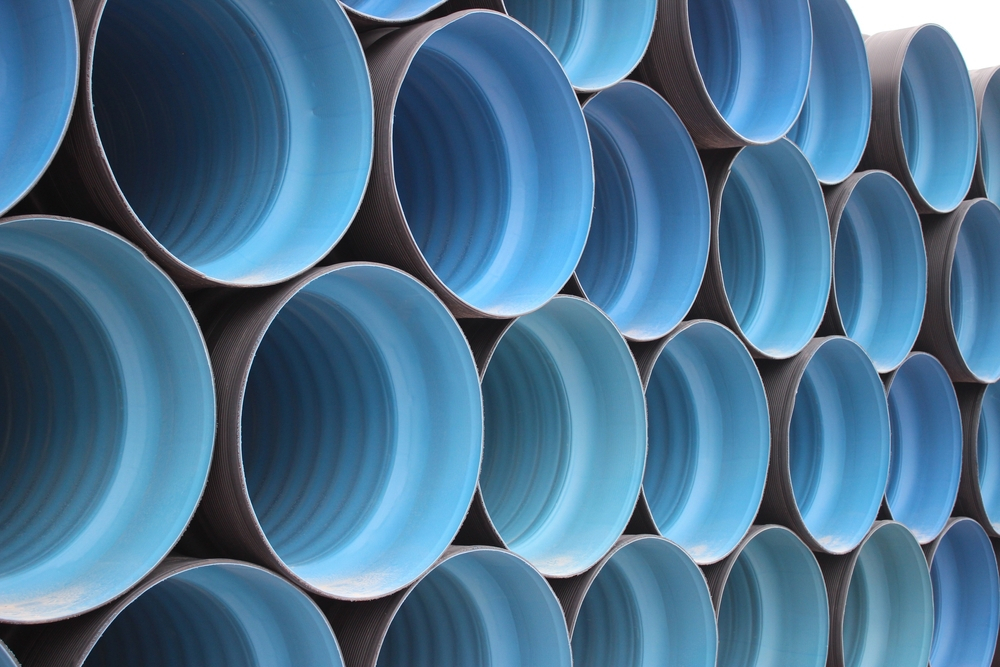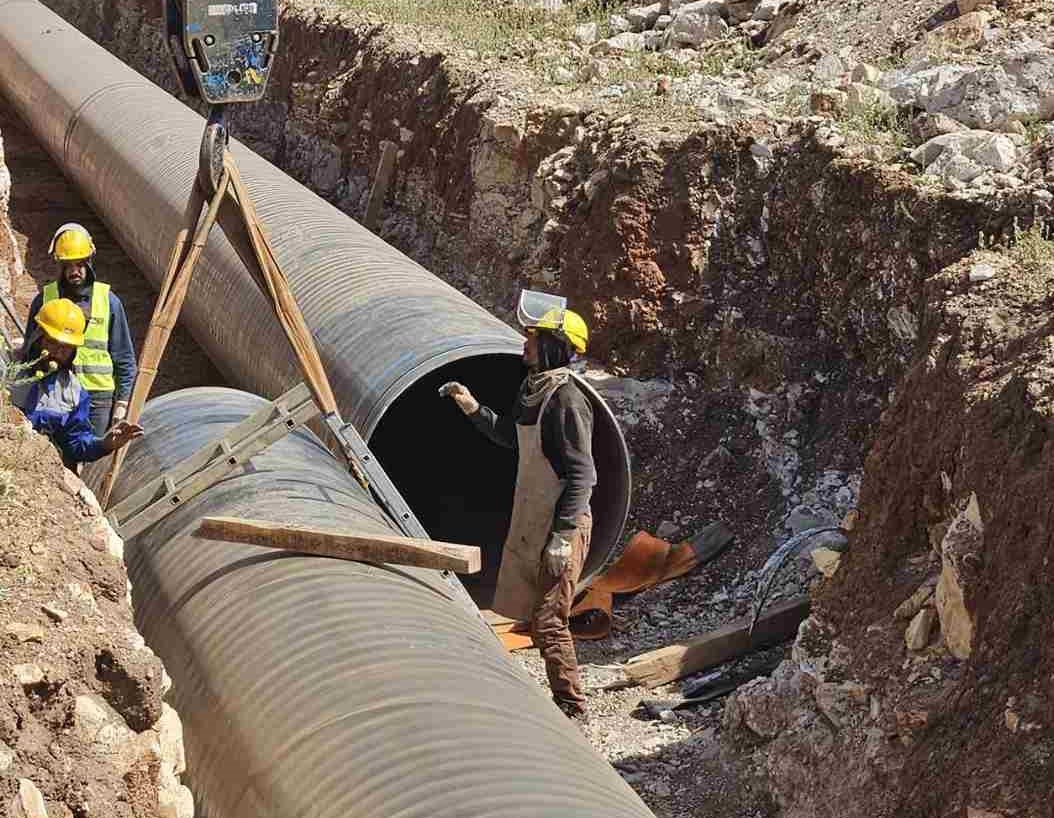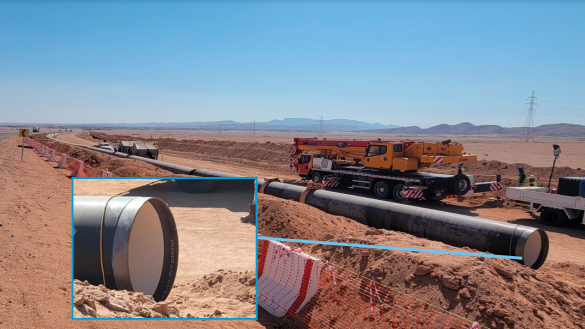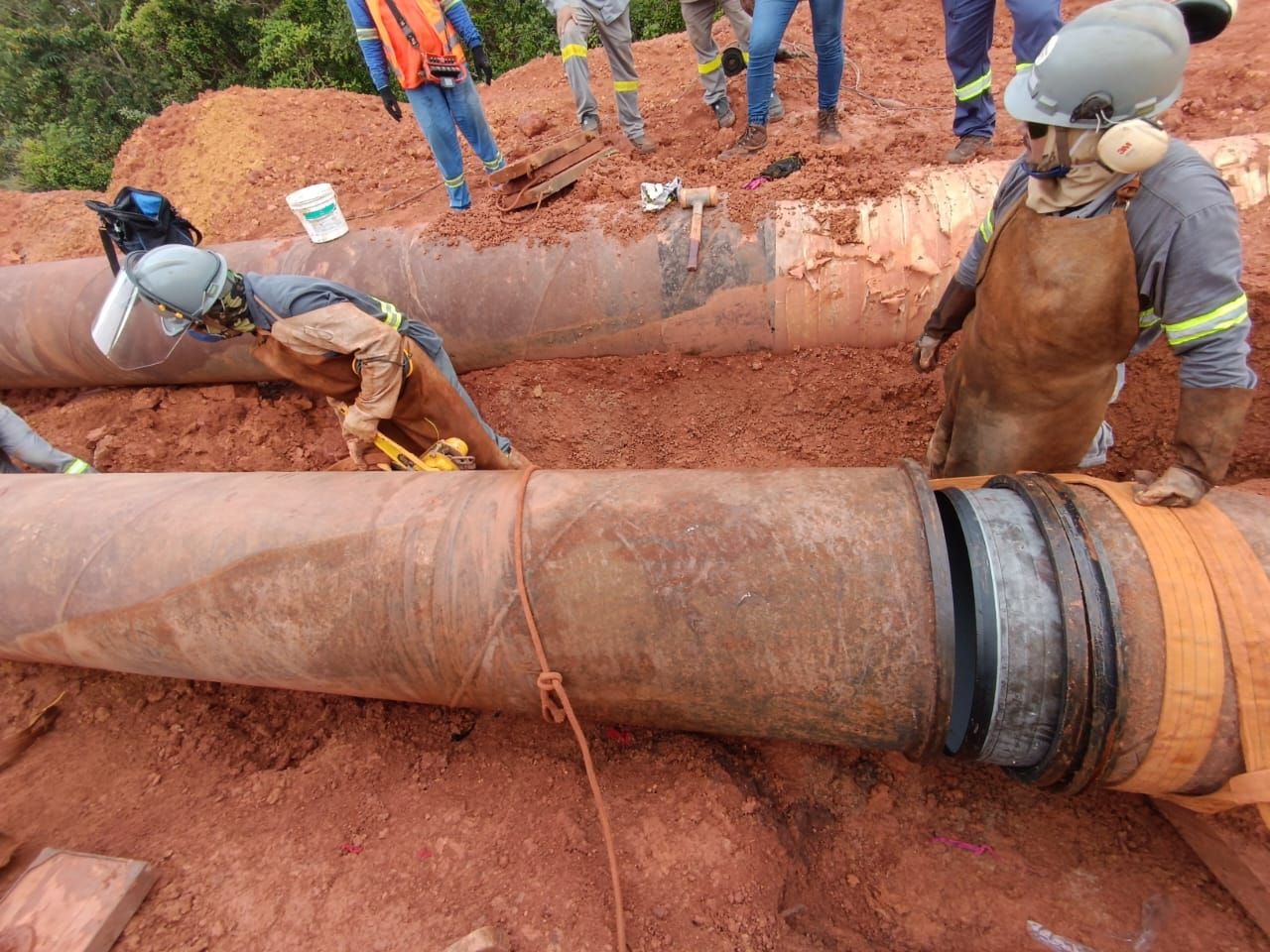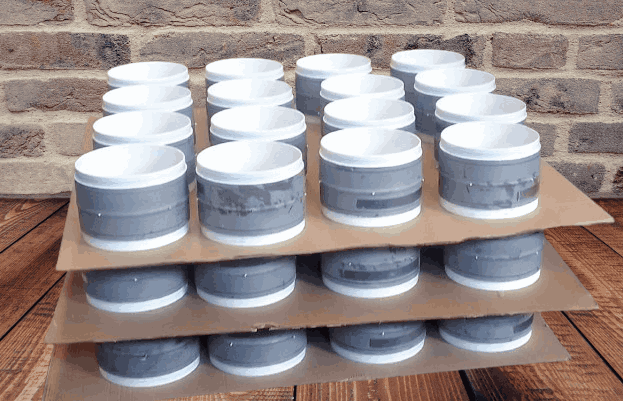Any chemically orientated metal that undergoes oxidation eventually experiences pipeline corrosion. This develops due to the metal’s inevitable and gradual deterioration through chemical reactions when it comes into touch with the environment. The most frequent corrosion occurs in pipelines. It simply implies that the metal begins to dissolve when it comes into contact with the outside environment.
Coatings for pipelines are necessary to prevent corrosion and avoid holding up any installation. Internal coating of the pipes enhances flow, reduces deposit formation, and increases the pipes’ ability to resist corrosion. There are several internal pipe coatings, including glass flake coatings and fusion-bonded epoxy (FBE) coatings.
You may be interested in our blog: External Pipeline Coating Vs Internal Pipeline Coating
Why Pipes Underground Need To Be Coated?
When a pipe needs to be buried underground, we must take extra precautions to safeguard its outside. The soil’s acidic properties mostly cause this. You can find soft mud, sand, rocks, wetness, minerals, salt water, and other materials in the soil. The steel pipes will suffer significant corrosion in this setting.
Types Of Corrosion
Following are some typical types of corrosion that might be expected in underground corrosive environments:
General corrosion is the slow deterioration of pure metals caused by contact with air, moisture, or a chemical (such as an acid).
Microbiological corrosion happens when sulfate-reducing bacteria are present. They change soil sulfate into sulfide, which damages steel and leaves deep trenches.
Stress corrosion is a sort of environmental-assisted cracking or cracks developed by a combination of different elements and the environment near the pipeline. It happens as a result of tensile stress combined with corrosion.
Pitting corrosion is a localized type of corrosion that forms “holes” or cavities in the material.
We apply a coating to underground pipes and pipelines to stop corrosion. Steel is shielded from the environment by the coating.
How Do ID Pipe Coatings Work?
A two-part epoxy mixture comprising a resin and a curing agent is used as an internal pipe coating.
These two components combine to create a semi-thick liquid that may thoroughly coat the interior diameters of plumbing pipes, including straight lines and those with bends and elbows. Epoxy pipeline resin is a very powerful and adaptable internal pipe coating.
Preparing The Pipe Surface
Cleaning and degreasing removes dirt, debris, and impurities that may prevent coating adhesion. Surface roughening may improve coating adhesion.
Application Of Coating Material
Then apply the coating substance. The coating material depends on the pipe’s application, environment, and desired protection.
Spraying, brushing, or dipping apply the coating. To meet standards, uniform coverage, and coating thickness are essential.
Curing The Coating
To maximize its quality, the coating material must be cured. Depending on the coating material, the pipe may be heated or fixed using UV light.
Proper curing helps the coating bind to the pipe surface and develop its protective properties, ensuring its performance and longevity.
Advantages of ID Pipe Coating
Following are some of the main advantages of ID pipe coating:
Environmental Benefits
Internal pipe coatings reduce leaks and spills. Coatings reduce corrosion and preserve pipe integrity, safeguarding ecosystems and public health.
Pipe Diameter Preservation
ID pipe coating adds a thin covering to the inner surface, minimizing diameter reduction. This internal diameter preservation keeps the pipe’s capacity and flows unaffected.
Enhanced flow
Pipes with inside coatings flow more efficiently. The coating reduces turbulence and resistance, making fluid flow through the pipe easier. This can boost flow and reduce pumping.
Flexibility
ID pipe coatings are customizable. Based on fluid type, temperature, pressure, and environment, coating materials, thicknesses, and application methods can vary.
This adaptability facilitates customization and optimizes performance in many applications.
Challenges and Considerations of ID Pipe Coating
Handling and Transport
ID-coated pipes must be handled carefully to avoid damage. Loading, unloading, and storage must avoid mechanical or abrasive actions that could damage the coating.
Coating Materials selection
To meet application requirements, choose the suitable coating. Consider the operational environment, temperature, pressure, and fluid or gas transferred through pipes. Epoxy, polyurethane, and FBE coatings vary in corrosion, chemical, and durability.
Cost Considerations
Material, surface preparation, application, inspection, and maintenance of ID pipe coating can be costly. Coating materials and methods should balance pipeline protection with cost-effectiveness over its estimated lifespan.
Uniformity
To protect the pipe, it must have a uniform coating thickness. Due to pipe diameter, shape abnormalities, and obstructions like valves and bends, coatings can be difficult to apply uniformly. Uniform coverage may need special application methods and equipment.
FAQs
What is applied to pipes as a coating?
A common epoxy coating is Fusion Bonded Epoxy (FBE), which attaches effectively to pipes and prevents corrosion over the pipeline’s lifespan. Depending on the need, several thicknesses of epoxy can be applied.
What differentiates pipe coating from pipelining?
The main distinction between a coating and a liner is that a coating’s goal is to protect the outside surface of a building or surface. External elements, including rain, pollution, biological and chemical contaminants, and physical stressors like abrasion and collision, are frequently to blame for this.
Why is coating for pipes important?
Other functions that coatings can perform include wear resistance, weather resistance, and thermal or electrical insulation. Additionally, internal coatings may improve flow or safeguard against certain abrasive goods the pipeline is transporting.
What is ASTM pipe?
Through percentages of the allowable quantities of carbon, magnesium, nickel, etc., ASTM standards establish the precise manufacturing process of the material and identify the exact chemical composition of pipes, fittings, and flanges. These standards are denoted by “Grade.”
Bottom Lines
Coating materials are intended for contact and provide safe drinking water. Examples of coatings include polyurethane (PU), liquid-applied epoxy, fusion-bonded epoxy (FBE), and coal tar enamel. These are the instances that require a toxicological evaluation of chemical concentrations initially.
Each coating type has benefits and drawbacks in terms of performance and application. When selecting a coating for the required service environment, you should consider these factors and various pipeline coating types.
We hope you may like our blog ID pipe coating process!

